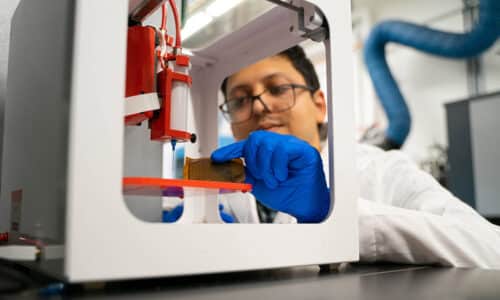UBC researchers have been able to investigate the possibilities of wearable human motion devices because of the development of high-resolution extrusion printing— 3D printing but with ink that conducts electricity.

Wearable technology, such as smartwatches, heart monitors, sleep aids, and even step counters, has become commonplace. Researchers from UBC Okanagan’s Nanomaterials and Polymer Nanocomposites Laboratory have developed even smaller, lighter, and more precise sensors that may be embedded in clothes and equipment. The UBC research team is using a high-resolution extrusion printing approach to build tiny devices with dual functionality—EMI shields and a body motion sensor—in conjunction with Drexel University and the University of Toronto.
Dr. Mohammad Arjmand, Assistant Professor and Canada Research Chair in Advanced Materials and Polymer Engineering at UBC Okanagan’s School of Engineering, explains that these EMI shields are small and lightweight and could be used in the health care, aerospace, and automotive industries. Dr. Arjmand’s team created a conductive ink with a number of features that make it easier to integrate into wearable technology by combining a two-dimensional inorganic nanomaterial called MXene with a conductive polymer.
“Advanced or smart materials that provide electrical conductivity and flexibility are highly sought-after,” he says. “Extrusion printing of these conductive materials will allow for macro-scale patterning, meaning we can produce different shapes or geometries, and the product will have outstanding architecture flexibility.”
According to PhD student Ahmadreza Ghaffarkhah, current manufacturing procedures for these functional materials are generally limited to laminated and rudimentary structures that do not allow for the integration of monitoring devices. “These printed structures can be seeded with micro-cracks to develop highly sensitive sensors. Tiny cracks in their structures are used to track small vibrations in their surroundings,” says Ghaffarkhah. “These vibrations can monitor a multitude of human activities, including breathing, facial movements, talking as well as the contraction and relaxation of a muscle.”





